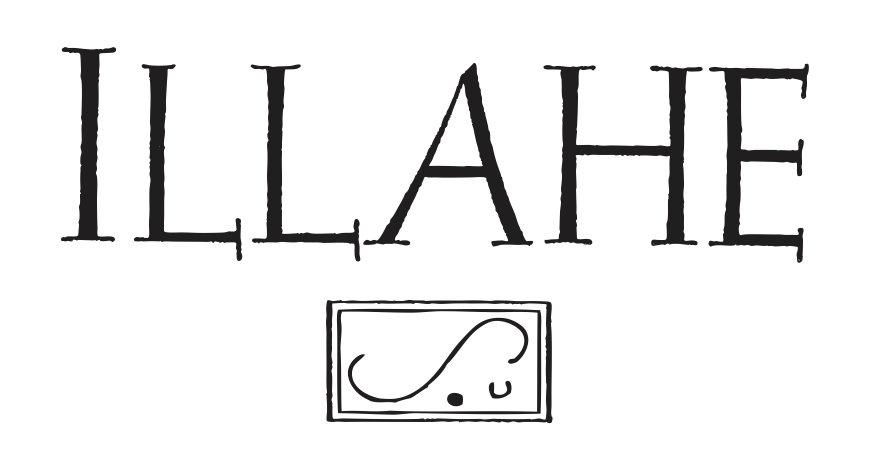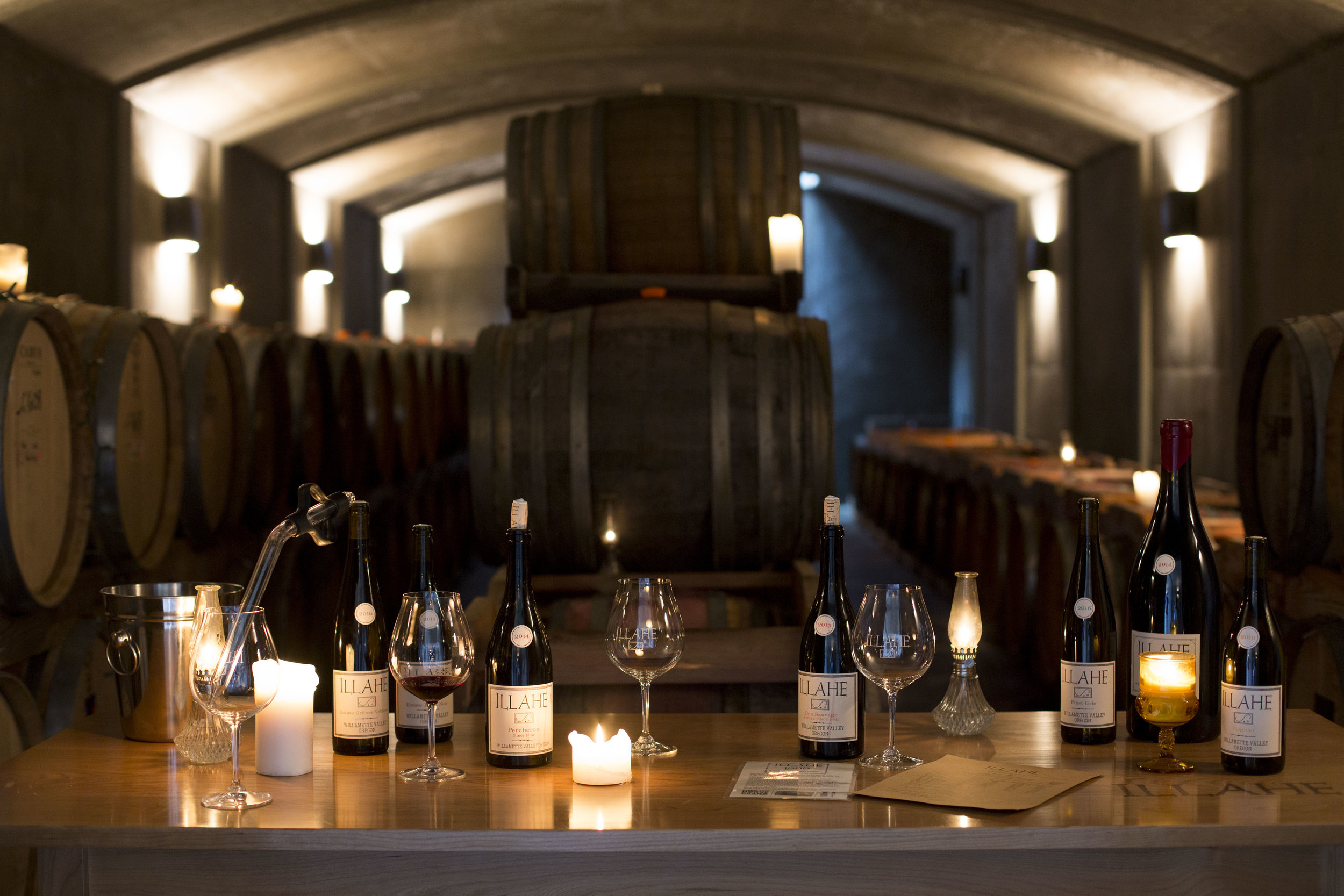Our gravity-flow winery features three levels, utilizing the natural slope of the site, starting from the crush pad to the fermenters and the press below. A further drop-off from the fermentation room to the press level allows us to load the press baskets by hand. The building’s west and north faces are buried in the hill which stabilizes the temperature throughout the year.
We also harvest rainwater to help mitigate dry spells in the summer.
Cave
Our wine cave, located behind the winery underneath the highest part of the property, was completed in 2015 and stores around 150 barrels. All of the wines in our Historical Winemaking Series, the Bon Sauvage, Percheron and 1899, all mature in-barrel here for 15 to 20 months. We also conduct tours and special barrel tastings in the wine cave, which keeps wine at perfect temperature and humidity.
Both the winery and cave were designed by Laurence Ferar and Associates of Portland, OR.
Vinification
Minimal intervention and historical winemaking techniques characterize our winemaking at Illahe.
Harvest is done by hand and the grapes are delivered to the winery by horse in very short totes or five-gallon buckets. We guard against juicing, degradation of grape clusters and exposure to harmful yeast before processing. The grapes are loaded onto the sorting table where any unripe or damaged clusters are removed by hand.
Grapes are then either destemmed (whole berry) or kept whole cluster before entering the fermenters. For the 1899 Pinot Noir, the destemmer is powered by hand.
The grapes are cold soaked for two to six days before undergoing a fermentation by natural yeast. Illahe uses over 50 fermentation vessels to increase complexity and retain cool ferments. The cap (the skins and pulp floating on the surface) is punched down by tool or on occasion by (a very clean) foot. Our red wines ferment naturally.
The finished product is drained and then scooped carefully down to the press level. We use a wooden basket press, only retaining enough tannin in pressing for aging. The 1899 Pinot Noir is pressed using an iron channel bar, chains and come-alongs. It is settled and transferred to barrels with the assistance of a bike-powered pump—an instrument Brad constructed.
Some whites (the Grüner Veltliner and Viognier) are destemmed and skin-soaked overnight;
The Pinot Gris and Tempranillo Rosé are pressed whole-cluster. They are fermented cool in stainless steel, neutral oak or acacia.
Illahe’s Label
Our labels were redesigned in 2010 by James Siena, an artist whose work has appeared in the Met, Museum of Modern Art and Whitney, alongside letterpress artist Ruth Lingen. The aim was to create a classic look utilizing vintage American fonts.
If you haven’t noticed by now, we try to do things in the hand-crafted, old fashioned way, both in the vineyard and in the way in which we make our wines. James was insistent on a number of features that exemplify this, in particular showing the vintage on the necker and in the simplicity of design.
Ruth Lingen, the letterpress queen of Brooklyn, found a beautiful font designed by Emil Rudolf Weiss for the ILLAHE type. (Don’t try to find this font on the internet – it comes directly from the antique type, perhaps from the famous Bauer type foundry itself.)
James Siena redesigned our logo using the Duployan script that (another) friend and designer Merry Young had previously found for the winery. (We have our friend Dan Schmidt, also a New York artist, to thank for hooking us up with James. Dan showed up at James’s studio on Canal Street with a few bottles of the earliest Illahe products – James was wooed by the Viognier so much that he offered to do our label design.)
Thank you, our sophisticated friends!
About our wax top:
When we began to change our packaging, we questioned the need for the tin capsule on the top of the bottle. While we are all for tradition, we also want to care for the environment. Unfortunately, capsules are only sustainable if they are recycled (which they usually aren’t). Hence, we decided to switch to a wax topping. The wax is applied by hand (with a spoon, in fact). It seals the bottle, allowing only a few molecules of oxygen in over the years, and creates a nice clean look. You can drive your corkscrew right through the wax to open your bottle.






